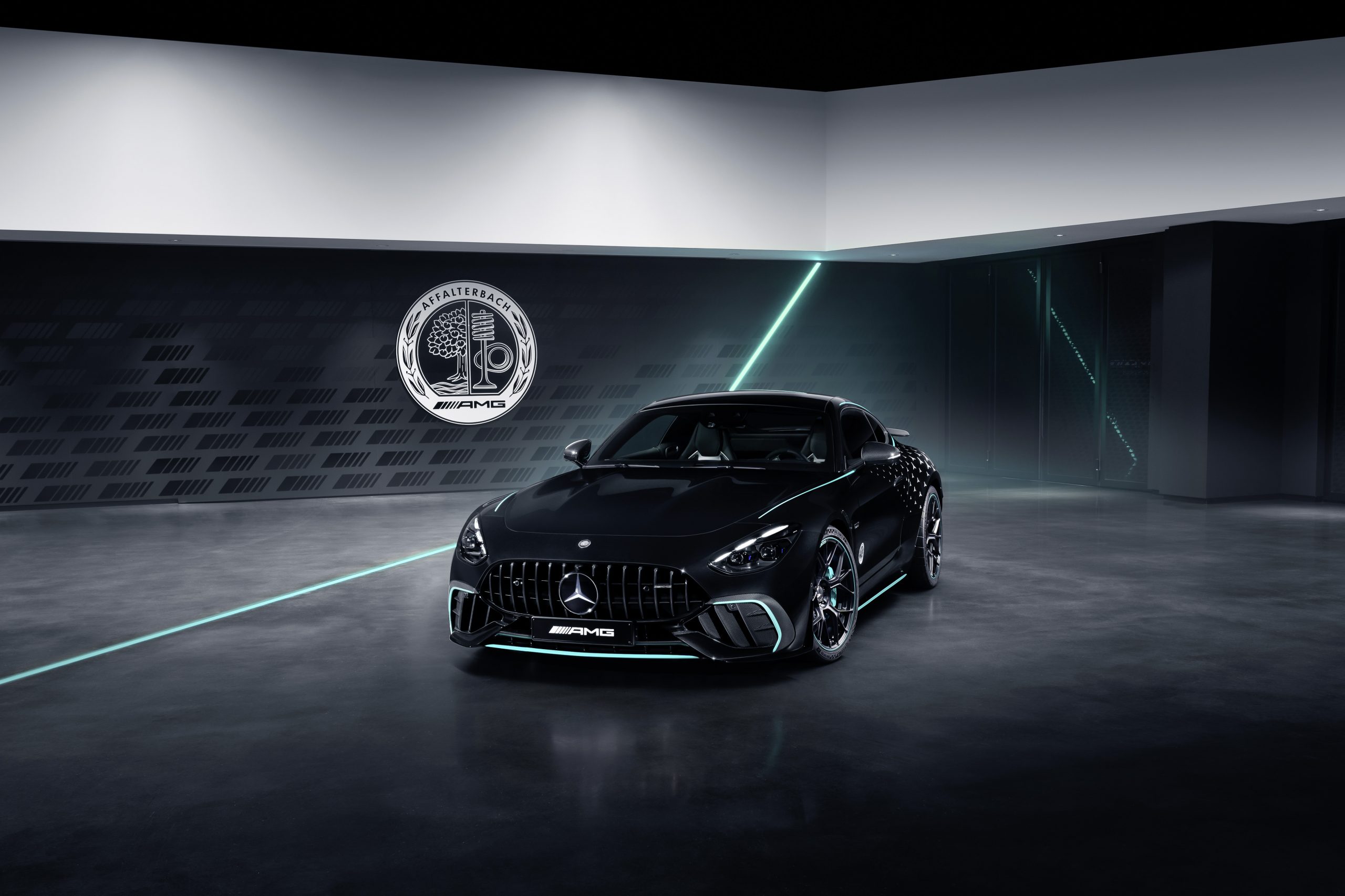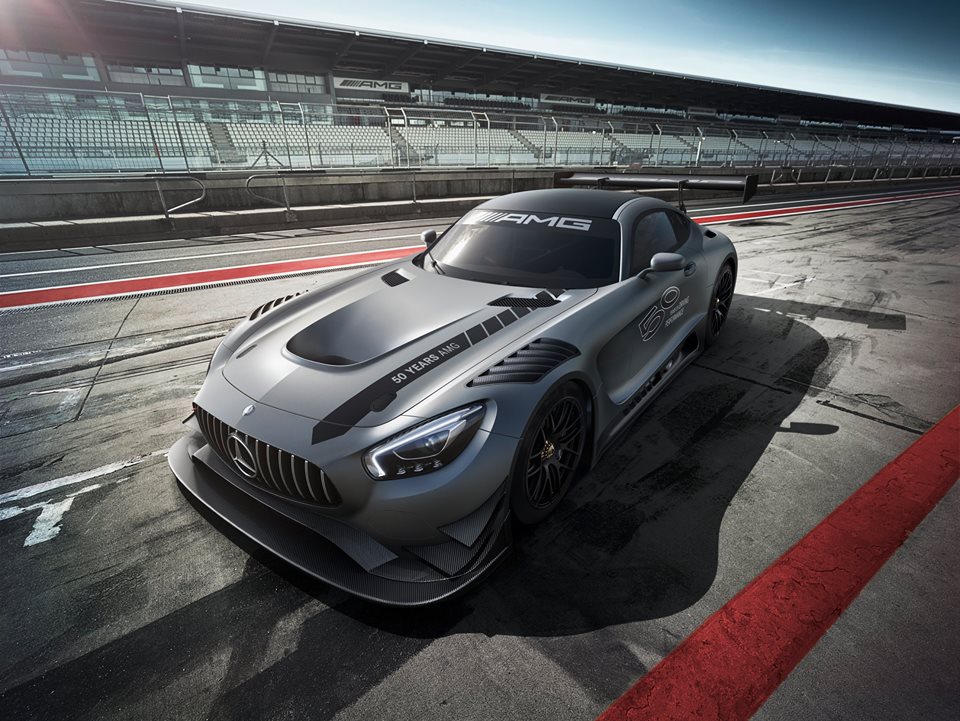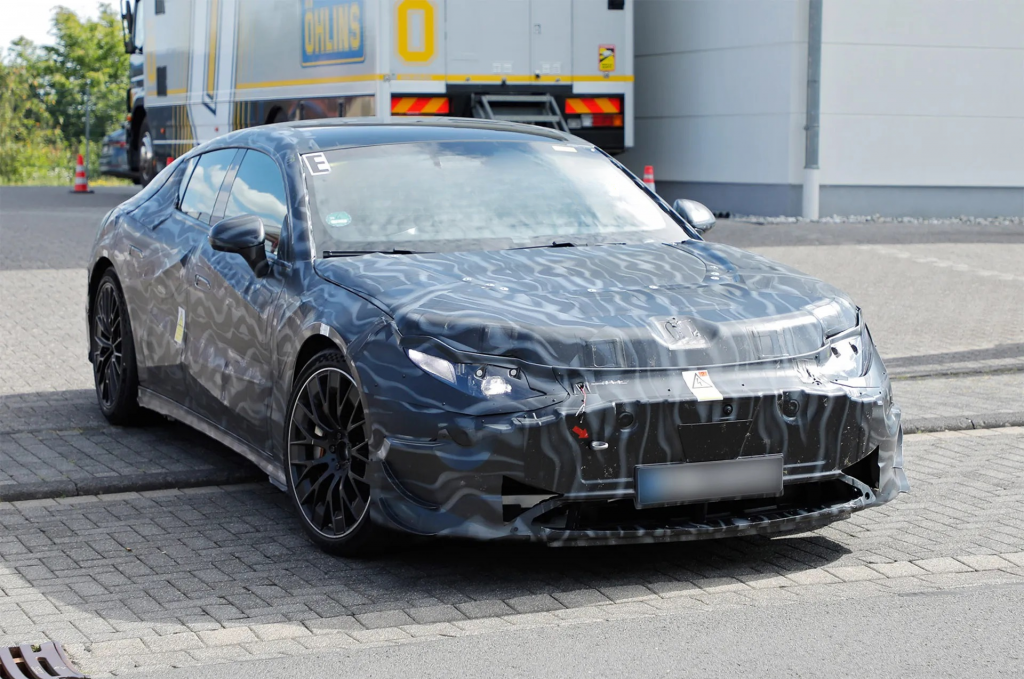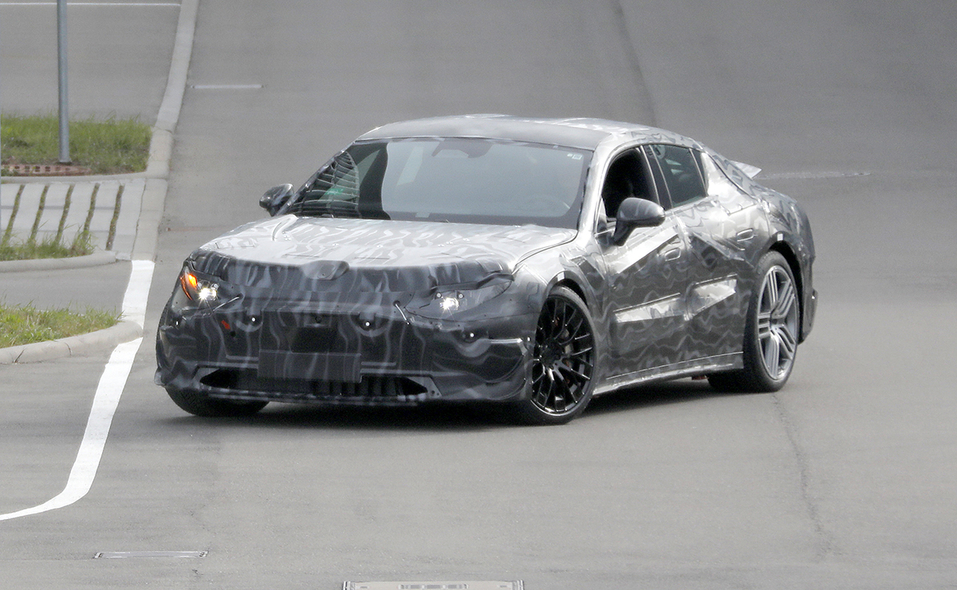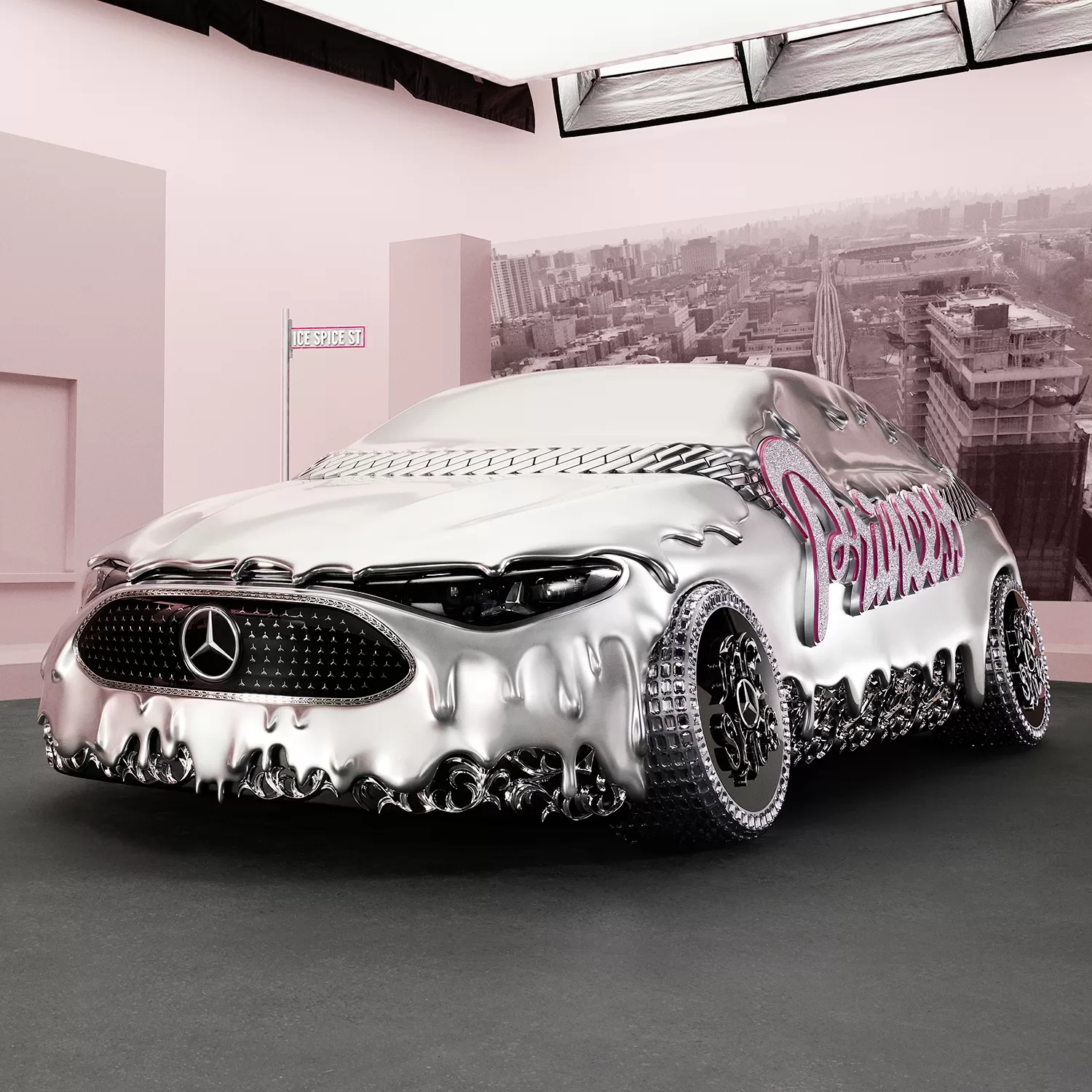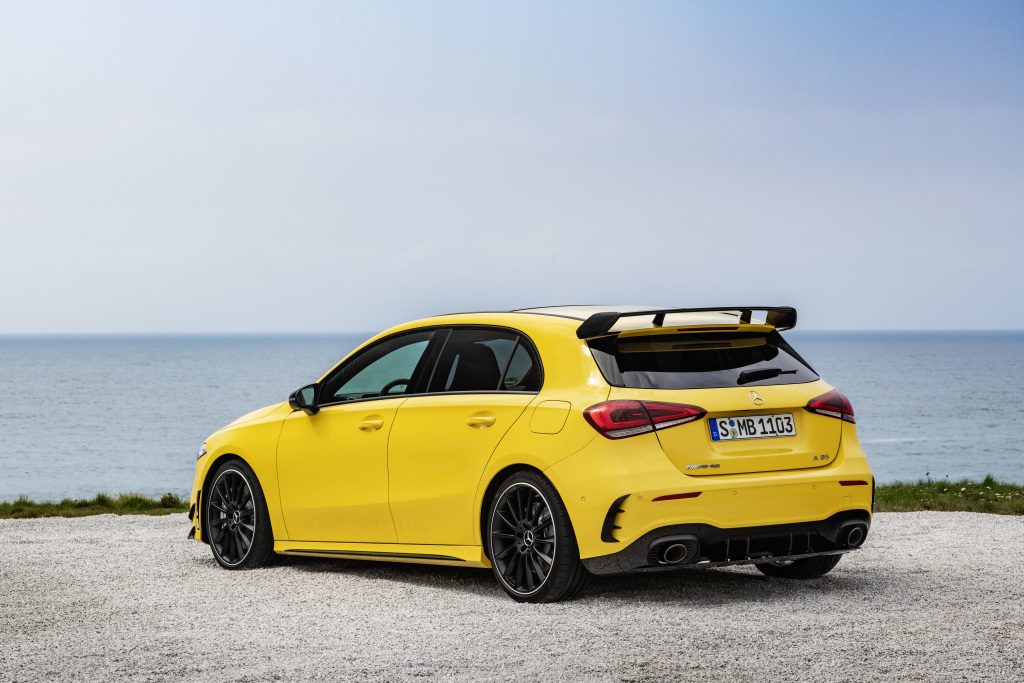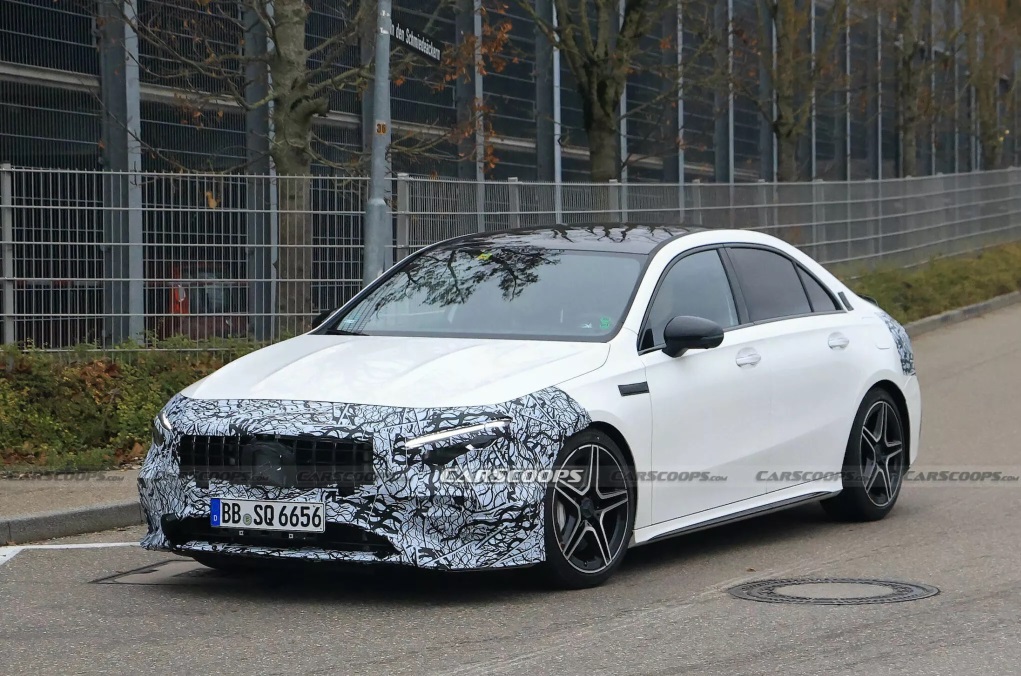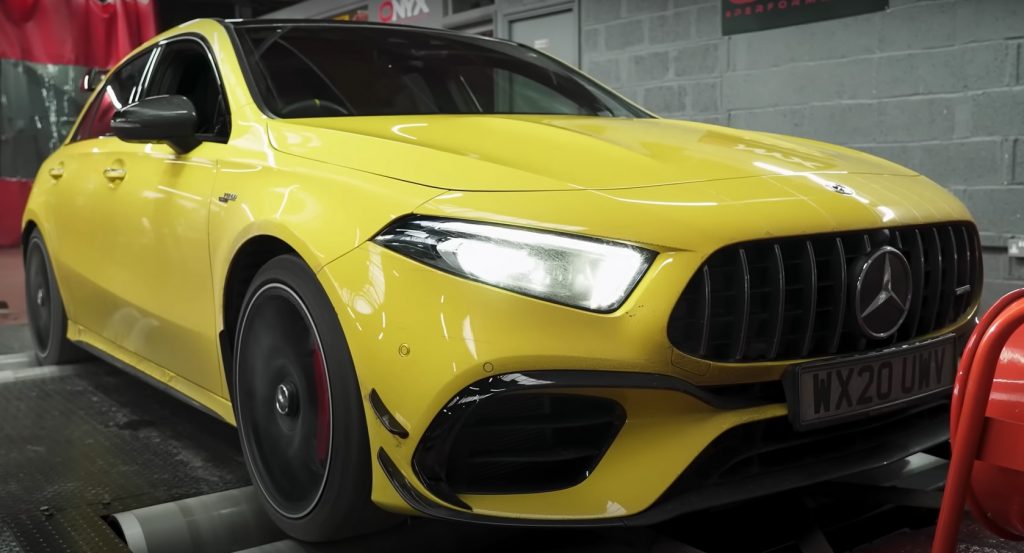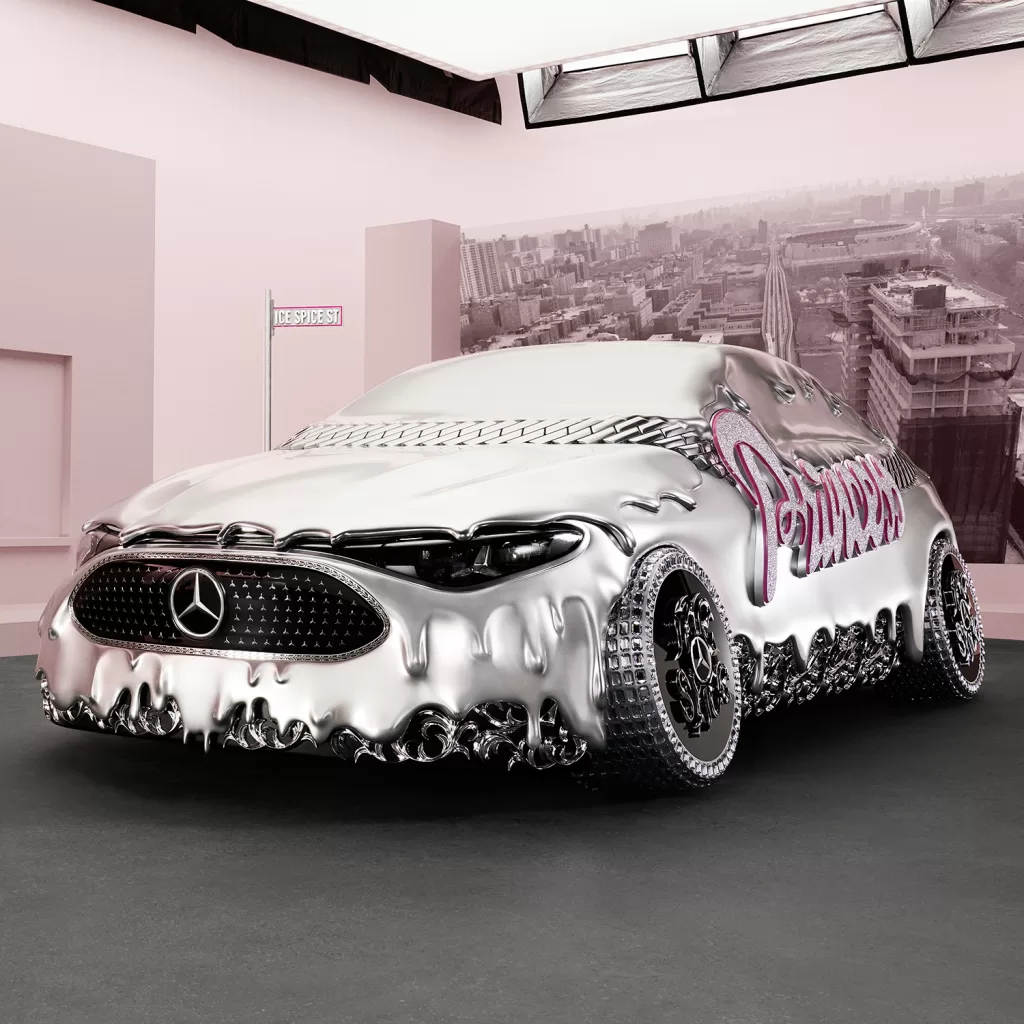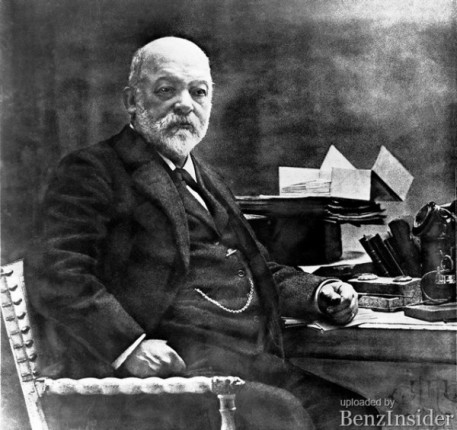
175 years ago, Gottlieb Wilhelm Daimler the visionary genius, inventor and engineer was born in Schorndorf.
Gottlieb Daimler provided the world with a source of power in the form of a light, high-speed petrol engine that could be used equally well “on land, on water and in the air”, as he once expressed it, and which changed people’s lives forever. The engine is the driving force behind individual mobility which has a major impact on all spheres of life in our day and age.
Apprenticeship and journeyman’s years
Gottlieb Daimler’s formative years were spent in the small town of Schorndorf, which in 1840 was home to some 4000 inhabitants. Along with Stuttgart, Tübingen and Urach, this was one of the most important towns in the Kingdom of Württemberg. He was given a thorough education even though this represented a considerable financial burden for his parents. It was only with the help of contributions from other members of the family that Gottlieb was able, after leaving primary school, to attend both classes of the famous Schorndorf Latin School. Later he attended the Schorndorf Art School, where he developed an excellent gift for drawing.
Continue reading the amazing story
After this formal education, young Gottlieb was to learn a craft. In 1848, the gunsmith
J. Chr. Wilke became Gottlieb’s master. Gottlieb Daimler’s journeyman’s piece of 1852 was a double-barrelled pistol with finely chased fittings and butt. However, a future as a craftsman in Schorndorf was not an option for him.
1852/1853: Studies in Stuttgart and further practical training
Daimler’s ambitions were already extending to a future far away from the confines of his home town. The early machine age, the industrial revolution, tremendous inventions such as steam engines, gas engines and the railway were tempting prospects for the 18 year-old, opening up to him a vast and promising world that suited his inclinations admirably. The logical step for the young man to take was to move to Stuttgart and continue his education at the Royal School for the Industrial Arts.
There, Gottlieb Daimler’s interest in everything with which he was confronted soon brought him to the attention of Ferdinand Steinbeis, the great patron of Württemberg industry. Steinbeis furnished him with a travel scholarship and sent him to Strasbourg, in the French Alsace region, to work at the Graffenstaden railway supplies factory. Thus Daimler began his career as a simple industrial worker on 20 January 1853. When they began to build locomotives at Graffenstaden, Daimler left the factory in order to prepare himself for the new challenge at the Polytechnic College in Stuttgart. Physics and chemistry, mechanical engineering, history, economics and English all formed part of his syllabus. In 1859 he went back to Graffenstaden, but somehow could no longer summon up any enthusiasm for building locomotives.
The way to the engine
In the summer of 1860, Daimler left the Graffenstaden engineering factory and headed for Paris where he worked for several months. A further travel scholarship from Ferdinand Steinbeis enabled him to travel to the heartland of technological progress, England, at that time the favoured destination of anyone interested in engineering and hungry for knowledge. Daimler found work in Leeds, Manchester and Coventry and also studied mechanised production, thread milling and shipbuilding.
The crowning glory of his stay in England was provided by the 1862 World Fair in London. After this spell, he returned home and worked in Geislingen until shortly before the end of 1863, at Straub and Son, a company that produced metal goods and was later to become well known under the acronym WMF.
1863: The “House of Brothers” in Reutlingen
Steinbeis continued to support him, even after his return home. With his assistance, together with that of Emil Kessler, the founder of the Karlsruhe engineering works and the initiator and director of the Esslingen engineering works, Daimler was given a position at the “Reutlingen House of Brothers”. This organisation, founded by the committed social reformer and one-time priest, Gustav Albert Werner, employed predominantly orphans, the poor and the disabled in its paper mill, wood-working factory and engineering works.
The latter was in financial difficulties at the time Daimler joined the organisation. Daimler was given the task of – and succeeded in – bringing it back on track.
1867: Emma Kurz and Wilhelm Maybach
It was during his five years of working in Reutlingen that Gottlieb Daimler was to meet two people who would remain with him through his future life. The first was Emma Pauline Kurz, the daughter of a pharmacist in Maulbronn. They got married in 1867. The other was Wilhelm Maybach, born in 1846 and thus twelve years his junior, who had been sent to the House of Brothers as an orphan. Maybach’s technical understanding, excellent work and inventiveness made him stand out from his peers.
In 1868, Daimler moved as Workshop Manager to the Karlsruhe engineering works, which first and foremost manufactured equipment for the railways, and took Maybach with him. The pair remained inseparable, both professionally and privately, until Daimler’s death in 1900. Daimler’s organisational skills guided the factory safely through the turbulent years of the 1870/71 war with France.
1872: Deutz gas engine factory
The joint owners of the Deutz gas engine factory, the engineer Gustav Langen and the inventor Nikolaus August Otto, extended the economic basis of their factory after this war and turned it into a public limited company. Their business was built around Otto’s improved atmospheric gas engine.
Langen sought an experienced manager for the workshops and design office, and found him in Gottlieb Daimler. Maybach became head of the engineering and design department, joining the company on 1 July 1872, with Daimler following him one month later. In time, Maybach managed to improve the gas engine. Yet its performance was limited, for it was simply too large and too heavy.
Otto therefore resumed his experiments with the four-stroke principle, which resulted in success in 1876, in the form of the four-stroke compression engine. But the engine was still not ready for use and it was up to Daimler and Maybach to solve the problems. They succeeded in optimising the engine and turned it into a top-selling article.
At that time, Daimler already had the vision of a small, universally applicable engine. But his vision was viable neither on the basis of the existing engine nor in conjunction with the gas engine factory – especially since there was considerable tension between the two inventors, Daimler and Otto. In 1882 Daimler was finally sacked and persuaded Maybach to resign of his own accord and join him in order to pursue the vision of the light high-speed engine elsewhere. Both of them were confident that this would be the revolutionary “capital invention” that they had been looking for.
1882: A new start in Cannstatt
The town of Cannstatt, immediately next to the royal residence of Stuttgart, was the place chosen by Daimler as a new place to live and work, and he secured Maybach’s support with a contract covering “… the completion of diverse projects and the solving of mechanical engineering problems, as commissioned by Mr Daimler.”
In July 1882 Daimler and his family moved to their new house in Taubenheimstrasse 13 in Cannstatt, with its garden and spacious summer house. Gottlieb Daimler was 48 years old and at last had the time to focus intensively on his vision.
1882: Hothouse of invention
The summer house in Daimler’s garden was converted and extended. The front room was used as an office, accommodating a desk and a bureau, while the adjoining light and airy room became the refuge of the two engineers, with the installation of a workbench and forge. For the time being, the design office was based in Maybach’s flat in Pragstrasse in Cannstatt, where he had lived with his wife Bertha since October 1882.
There was soon plenty of practical work going on in the summer house. The two men had begun to develop and to build, with their own hands, the lightweight and high-speed petrol engine that would be suitable for use in carriages, carts, boats, ships, locomotives and trams as well as agricultural equipment, fire pumps and even airships.
1883: The birth of the engine
Daimler’s and Maybach’s first task was to find a solution to the old problem with the ignition. Maybach worked his way through innumerable patent papers and finally came across the Englishman Watson’s uncontrolled hot-tube ignition system, which proved suitable for the high engine speeds aspired to. Once this hurdle had been overcome, it was time to find the right principle of operation. Both men were already familiar with the concept of the four-stroke engine from their time working at Deutz. They chose this mode, knowing quite well that Otto’s four-stroke patent DRP 532 was still valid. Since Otto’s idea involved a layer-by-layer charging of the cylinder and slow combustion of the gas mixture, Daimler based his application for patent DRP 28022 among other things on the principles of explosive ignition and rapid combustion.
1883: The engine is finished – and runs
Daimler’s dream uttered its first sounds in 1883 – it ran. This engine, with a displacement of roughly 100 cm³, had an output of 0.25 hp at a sensational 600 rpm – three times as fast as the Deutz gas engines – and it was light. The first major design objectives had been met in this engine.
1885: German Imperial Patent DRP 34926 for the “grandfather clock”
The improved version of the engine that followed saw it converted from a horizontal to a vertical position, hence giving it the nickname of “grandfather clock” due to its resemblance to the timepieces in common use at the time. This engine formed the basis for the patent registration DRP number 34926, which finally brought Daimler’s vision into the public domain on 3 April 1885.
The “grandfather clock” had an enclosed crankcase, on which stood the air-cooled cylinder. The intake valve opened and closed automatically, while the exhaust valve was operated by a curved groove control invented by Daimler, which also kept the revolutions in check. Additional features included a surface carburettor and a piston crown valve (abandoned again later) to assist the charging still further. The single-cylinder engine weighed just 60 kilograms, had a displacement of 264 cm³ and produced 0.5 hp, but now at 700 rpm.
November 1885: The first journey by “riding car”
Daimler and Maybach initially installed the engine that they had designed for universal use in any vehicle into a two-wheeler, a most cost-efficient test vehicle. In November 1885 , Wilhelm Maybach, aged 39, Gottlieb Daimler’s son Adolf covered the three-kilometre stretch from Cannstatt to Untertürkheim on the world’s first motorbike without a problem.
1886: Motor carriage and marine engine
Fitting the engine to a carriage – a dark blue “Americain” with red trim, black leather seats and a “lantern with permit”, as it says in the delivery note from the carriage-builders Wimpf + Son in Stuttgart of spring 1887 – represented the next step in their very consistent plans. This vehicle, known as the “motor carriage”, attained a remarkable 16 kilometres per hour with its 1.5 hp “grandfather clock”. And yet the excursions with the motor carriage were not publicly documented until the summer of 1888. What is interesting is that Daimler applied for a driving permit on 17 July 1888 for a “light four-seater chaise with a small engine”. The first driving licence.
It was on water that the new engine caught on more quickly than on the road, however. Daimler applied for a patent for a “machine to drive the propeller shaft of a ship by either gas or petroleum-powered engine” on 9 October 1886 and subsequently presented his motorised boats on various occasions. The greatest interest in this new source of propulsion was shown in Hamburg where large numbers of marine engines were ordered from Daimler. The summer house was gradually becoming too small for Daimler’s and Maybach’s diverse activities.
1887: The factory on the Seelberg
At this point Daimler began to look for more suitable manufacturing premises to accommodate his growing engineering design requirements and to satisfy the constant demand for his engine. Such premises were soon found on a hill quite near his home, called the Seelberg, in the buildings of a nickel-plating works that were for sale.
Work started in the new factory in July 1887 with 23 employees, whom Daimler had carefully selected and taken on for their particular skills. Maybach now also had his engineering design offices here, while Karl Linck managed the commercial side of things.
Daimler now became very active in order to increase awareness for his engine that could be used on land, on water and in the air. With the approval of the local council, he built a small railway on the route between the Cannstatt spa hall, or “Kursaal”, and Wilhelmsplatz, on which ran a locomotive of his own patent design. Similar railways proved extremely popular in other towns as well. A four-horsepower fire engine shown at a trade fair in Hanover in 1888 attracted considerable attention, and the airship built by Wà¶lfert, a Leipzig bookseller, completed the four-kilometre flight from Cannstatt to Kornwestheim powered by the Daimler engine.
1889: Two-cylinder engine and wire wheel car
It became clear that the single-cylinder engine had too little power for many potential areas of use. Maybach designed a two-cylinder engine, based on the “grandfather clock”. This new V-shaped engine, with a cylinder angle of 17 degrees, had a power output of 2 hp at about 600 rpm and opened the door to new applications. It was installed in the wire wheel car designed by Maybach in 1889. This design had a major impact on the further development of the automobile, especially in France, where the car was shown at the Paris World Fair in 1889.
Daimler’s presence in France
Daimler had been maintaining contacts with France ever since his time at Deutz through the Deutz gas engine factory’s affiliate in Paris . One of its employees had been Edouard Sarazin who later quit to become a licensee of Daimler. After Sarazin’s death in 1887, his wife took over his business and joined forces with strong partners, Ren© Panhard and Emile Levassor.
Madame Sarazin married Levassor in 1890 and together with Panhard, the three of them established the foundations of the fast burgeoning French motor industry. They installed their Panhard-Levassor engines – built under a Daimler licence and very much in demand in France – in their cars and went on to be very successful in early motor races. The reliability of the engines proved its worth.
Daimler-Motoren-Gesellschaft
Max von Duttenhofer, the Director General of the Cologne-Rottweil gunpowder factories, and Wilhelm Lorenz, chairman of a cartridge factory in Karlsruhe, tried to convince Daimler time and time again that he needed to establish a broader financial basis for his sensational invention. Although Daimler’s wife Emma, who died on 28 July 1889, had supported the two financiers’ plans, especially with her children’s future in mind, Daimler hesitated for a long time, was mistrusting and tried to safeguard his interests as far as the further development of the engine was concerned as best he could.
Following a preliminary contract dated 14 March 1890, which was designed to safeguard Daimler’s inventions as far as possible within the proposed company, a new company was finally formed on 28 November 1890: “Daimler-Motoren-Gesellschaft (DMG)”.
Like Duttenhofer and Lorenz, Daimler held 200 shares, representing a third of the capital stock totalling 600,000 Marks. It had also been agreed that Daimler’s closest collaborators, Wilhelm Maybach and accountant Karl Linck, would be appointed to the board of management – a promise that was not kept, however. Enraged, Wilhelm Maybach left the company on 11 February 1891, followed by Linck six months later.
With Maybach, the company lost its most capable engineer. His successor, Max Schrà¶dter, knew little about internal combustion engines and the company was eventually running into trouble. The staff, boosted from 22 to 163 in the year the company was founded, proved to lack qualification for the demanding mechanical engineering work involved. As a result, production figures declined while the number of complaints rose. It hurt Daimler to see that the company wasted its resources on the development of all sorts of products instead of using its potential for improving his engine. Losses of 140,000 Marks in the third business year completely offset the profits made during the first two years.
Daimler tried to stop this trend and as early as 1891 concluded a secret contract with Maybach to ensure that development work was carried on as planned by him. Maybach initially used his flat as a design office and engaged in fundamental research geared to a new motor vehicle, the belt-driven car. Daimler took out a lease on the closed-down conservatory of Hotel Hermann in Cannstatt and converted it into a production workshop where Maybach, supported by twelve workers and five apprentices, tackled the new tasks which were to benefit Daimler-Motoren-Gesellschaft only a few years later.
During this period, Maybach invented the spray-nozzle carburettor, the precursor of all present-day carburettors, as well as several new features for the cooling system as inadequate engine cooling was still one of the greatest problems to be solved.
Maybach’s most significant invention, however, was an engine that was enthusiastically named “Phoenix” by Levassor. Engines of this type – with cylinders vertically arranged side by side and cast in one block – were to become the backbone of Daimler-Motoren-Gesellschaft at a later stage.
During this period, Daimler’s position within the company deteriorated. In March 1893, Duttenhofer, having gained the majority of votes, robbed him of his position as Technical Director. From then on, Daimler was just an ordinary shareholder and member of the supervisory board. There was also significant change in his private life. On 8 July 1893, he married his second wife, Lina Hartmann, and the two of them set out on a honeymoon trip to the World Fair in Chicago, where Daimler’s licensee William Steinway, who had been maintaining contacts with Cannstatt since 1888, displayed a wide range of DMG products on behalf of Daimler, among them the wire wheel car designed by Maybach – the first motor vehicle to be shown in the USA.
Daimler-Motoren-Gesellschaft’s downward trend was to be stopped neither by a reduction in staff nor by moving the design department to Lorenz’s factory in Karlsruhe. In this situation, Duttenhofer and Lorenz raised a bank loan of 385,000 Marks, without informing Daimler, and when the bank insisted on repayment, they faced Daimler with the company’s imminent bankruptcy, telling him that they would, in that case, acquire all the shares out of the estate in bankruptcy. As an alternative, Daimler was to let himself pay off with 66,666.66 Marks. Daimler accepted this deal for fear of being regarded as a bankrupt and losing his good reputation. He left Daimler-Motoren-Gesellschaft on 10 October 1894 – a step from which the company was not to benefit.
1895: Frederick Richard Simms
DMG was by this time only building very few vehicles and even these were full of faults, so the company was close to bankruptcy by the time an English consortium, headed by Frederick Richard Simms, bought the rights for the Phoenix engine from DMG for an unusually high figure in 1895. This was, however, subject to Messrs. Daimler, Maybach and Linck being restored to their earlier rights and given senior positions. His demands were fulfilled.
Thanks to the improvements and new designs that Daimler and Maybach were now able to put their energy into driving forward, DMG soon recovered lost ground. The company established outposts in America, Austria and England. The very active office in Italy provided the catalyst for the young cavalry lieutenant Giovanni Agnelli to turn his attention to manufacturing automobiles. He founded the Fabbrica Italiana Automobile di Torino, abbreviated to FIAT. In America, Henry Ford followed Daimler’s example and built his first small “gasoline car”.
With the death of Gottlieb Daimler on 6 March 1900, the first phase of Daimler-Motoren-Gesellschaft came to an end. A question mark was also hanging over its location in Seelbergstrasse. In August 1900 DMG purchased a bigger site in Untertürkheim, to enable it to expand, and Emil Jellinek entered races under the pseudonym “Mercedes”, the name of his youngest daughter. With this name, which became the brand name for all Daimler automobiles from 1902 onwards, DMG enjoyed an unexpected upturn in business.
Gottlieb Wilhelm Daimler, 1834 – 1900
1834
Born in Schorndorf on 17 March
1848 – 1852
Apprenticeship with a gunsmith
1853 – 1857
Practical mechanical engineering training in Graffenstaden in Alsace
1857 – 1859
Mechanical engineering studies at the Stuttgart Polytechnic
1859
Return to previous job in Graffenstaden
1861 – 1863
Time spent in England; work at Messrs. Straub, a mechanical engineering company in Geislingen
End of 1863
Technical manager of the mechanical engineering factory of the “Bruderhaus” (Reutlingen House of Brothers)
1867
Wedding with Emma Kurtz
Dec. 1868
Plant manager of Carlsruhe Mechanical Engineering Company
1872
Technical manager of Deutz Gas Engine Factory
Sept. – Dec. 1881
Journey to Russia on behalf of Deutz
1882
Withdrawal from Deutz Gas Engine Factory,
move to Cannstatt and start of work in the greenhouse on his estate
1883
The first high-speed engine is operational
1885
The second engine, nicknamed the “grandfather clock”, is granted German Imperial patent no. 34926
First outing with the “riding car”, the world’s first motorcycle
1887
Engine production in a factory on Seelberg
1889
Two-cylinder V-engine, wire-wheel car and four-speed gear-only transmission
Death of Emma Daimler
1890
Foundation of Daimler-Motoren-Gesellschaft (DMG)
1890 – 1894
Deputy Member of the supervisory board of DMG
1892
Work with W. Maybach at the Hotel Hermann
1893
Wedding with his second wife, Lina Hartmann
1894
Withdrawal from DMG
1895
Daimler re-joins DMG as chairman of the supervisory board
1900
Gottlieb Daimler dies in Cannstatt on 8 March


